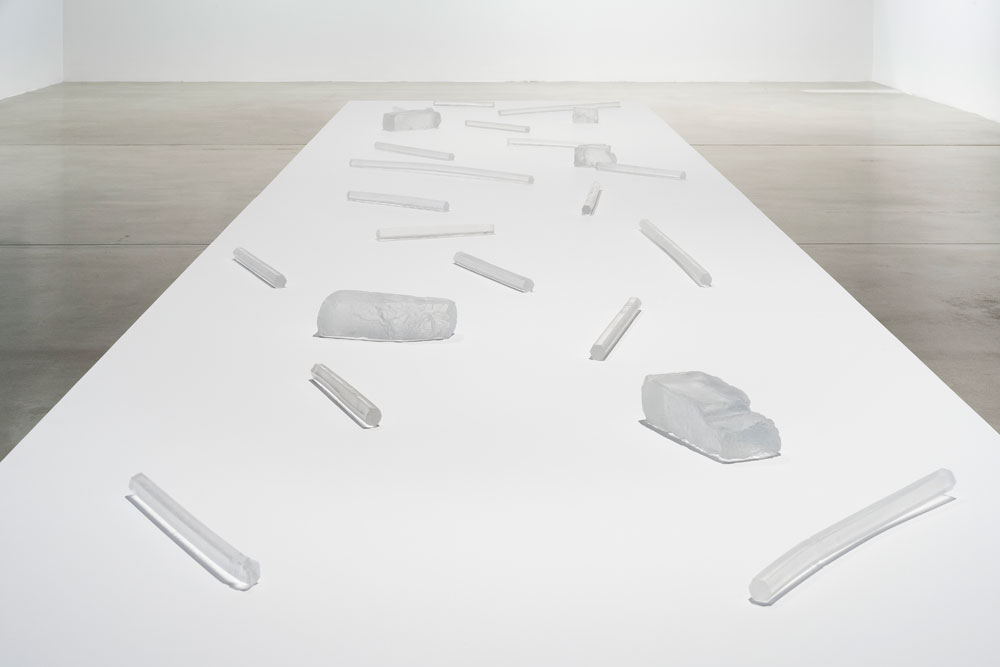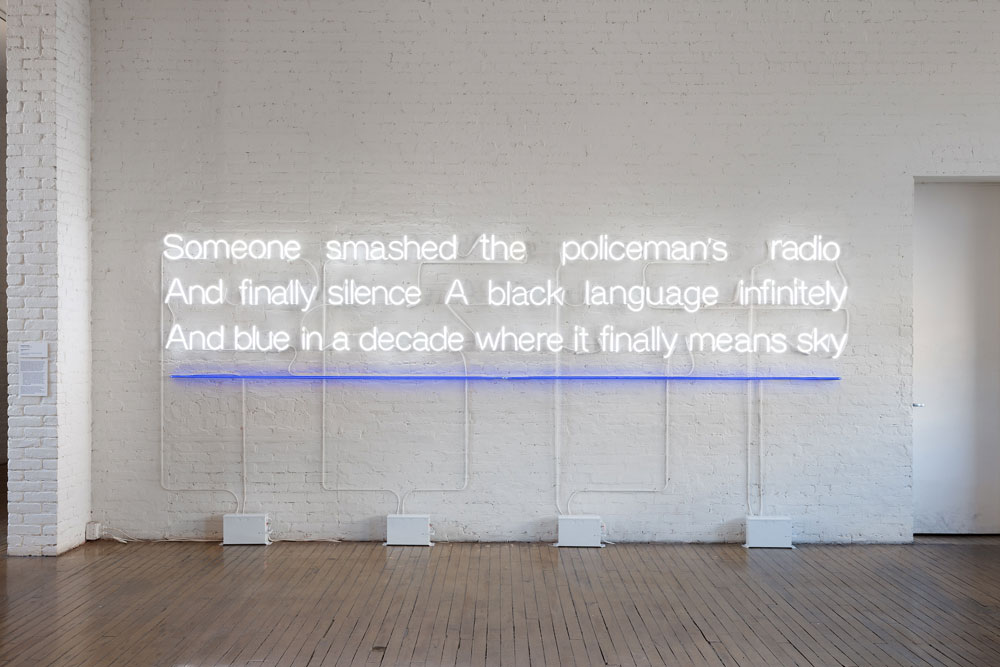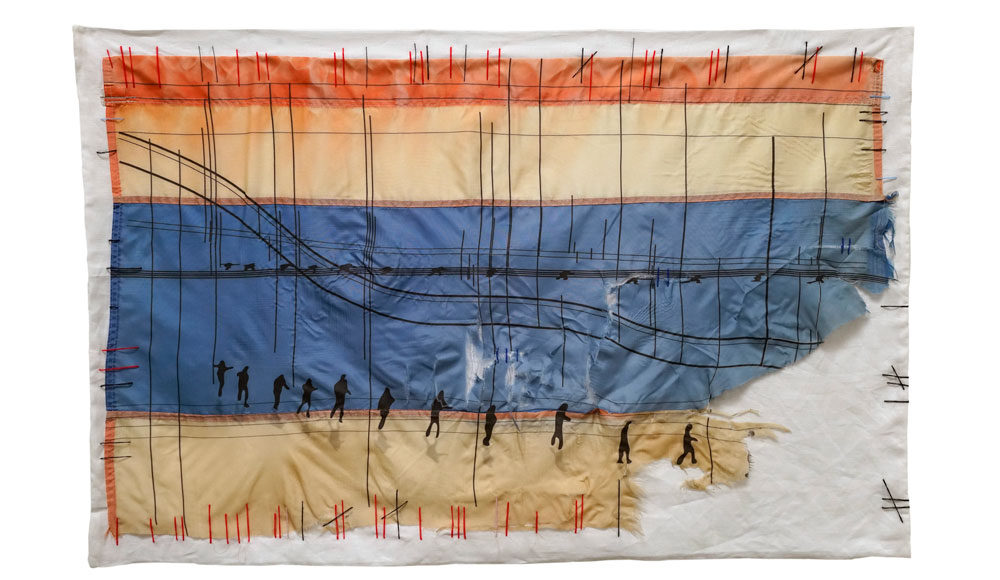In 2019, Gina Dent and Rachel Nelson launched Visualizing Abolition, a scholarly public initiative at UC Santa Cruz’s Institute of the Arts and Sciences, which uses art as a medium to advocate for prison abolition and change society’s attitudes towards the U.S. prison industrial complex.
Dent is a professor of feminist studies and Nelson is the institute’s director and chief curator. Their first exhibit, “Solitary Garden,” was an outdoor installation at the university that replicated the inside of a solitary confinement cell.
Since then, they’ve hosted more art shows, as well as online discussions, workshops and live music with the likes of the legendary Angela Davis and other activists. “Seeing through Stone” at the San Jose Museum of Art, which runs through Jan. 5, is a culmination of the program’s past exhibits, with the addition of 16 new commissions. The multi-site, mixed-media group show, running concurrently at IAS and Santa Cruz’s Barrios Unidos, features more than 80 international artists and artist collectives.
New Solutions to Social Harms
“Many people in the United States know that prisons are a problem,” Nelson says. “While they say that prisons are there to keep our society safer, they have not actually proven to do that. Our culture still accepts them as if they’re inevitable, normal and the only possible solution to social harms. But our society still struggles with mental health issues, poverty, homelessness, violence and domestic abuse that prisons are supposed to be part of the solution for.
“There’s been a long-running movement to think about the alternatives to simply warehousing people, but to think about how to address some of these problems,” Nelson continues. “So we’re working with artists who are suggesting different ways of community care, taking responsibility for the actions of people in our neighborhoods and addressing harm in different ways.”
“The current structures of prisons, jails and immigrant detention centers equate punishment with justice in a way that is inaccurate,” co-curator Lauren Schell Dickens adds. “So they’re working with artists and scholars to open up the cultural imagination and understand that prison is not the only alternative.”


The phrase “Seeing through Stone” is taken from a 1968 poem by Etheridge Knight, who served eight years for robbery and later became a poet and university professor. In fact, nearly 50 of the exhibit artists are currently in prison, while the others have previously addressed mass incarceration in their works. One of the themes they explore is the presence of the sky and the outdoors.
Looking Up for Inspiration
Maria Gaspar, for example, interprets the sky in a series of pastels on paper. She renders clouds above the Cook County Jail in her native Chicago to show what the horizon would look like if it wasn’t marred by a prison. Gasper also took bars and bricks from a recently demolished building that was part of the prison complex (which famously housed Al Capone and John Wayne Gacy) and cast them in glass.
“She casts them in glass so they can be seen through,” Nelson says. “She’s reminding us that although jails seem impenetrable and permanent, they’re actually fragile and delicate. They require a kind of constant community and social bias to keep them together.”
Similarly, Indian artist Shilpa Gupta uses the sky as inspiration for her wall drawing that’s in the shape of a flag and made out of what looks like police tape. Instead, “There is no border here” is printed on the yellow tape and the drawing spells out an original poem that begins, “I tried very hard to cut the sky in half.”


In another piece, Guillermo Galindo embroiders on a weathered flag that was used to mark the location of water bottles for migrants crossing the Calexico border. Galindo, who’s a composer, too, also uses pipes, tire skins, cloth booties, wood and other discarded materials found along the US-Mexico border to make an instrument that resembles drums strung together by barbed wire.
“What I’m really hoping is that people understand a little bit more about how carceral systems work,” says Nelson about the exhibit. “I also want them to come out with some hope. We are living in times in which it feels like our problems can be insurmountable, our communities are broken, people are angry at each other. But there’s people working all over the world to think about other ways we can be together that aren’t so destructive, whether or not they call themselves abolitionists. All around us are people living in ways that actually don’t depend on prisons and cages in order to solve social problems.”
Seeing through Stone is on view through Jan. 5 at San Jose Museum of Art. Admission $15; open Thurs, 4-9pm, Fri 11am-9pm, Sat-Sun, 11am-6pm. Free admission on First Fridays.



